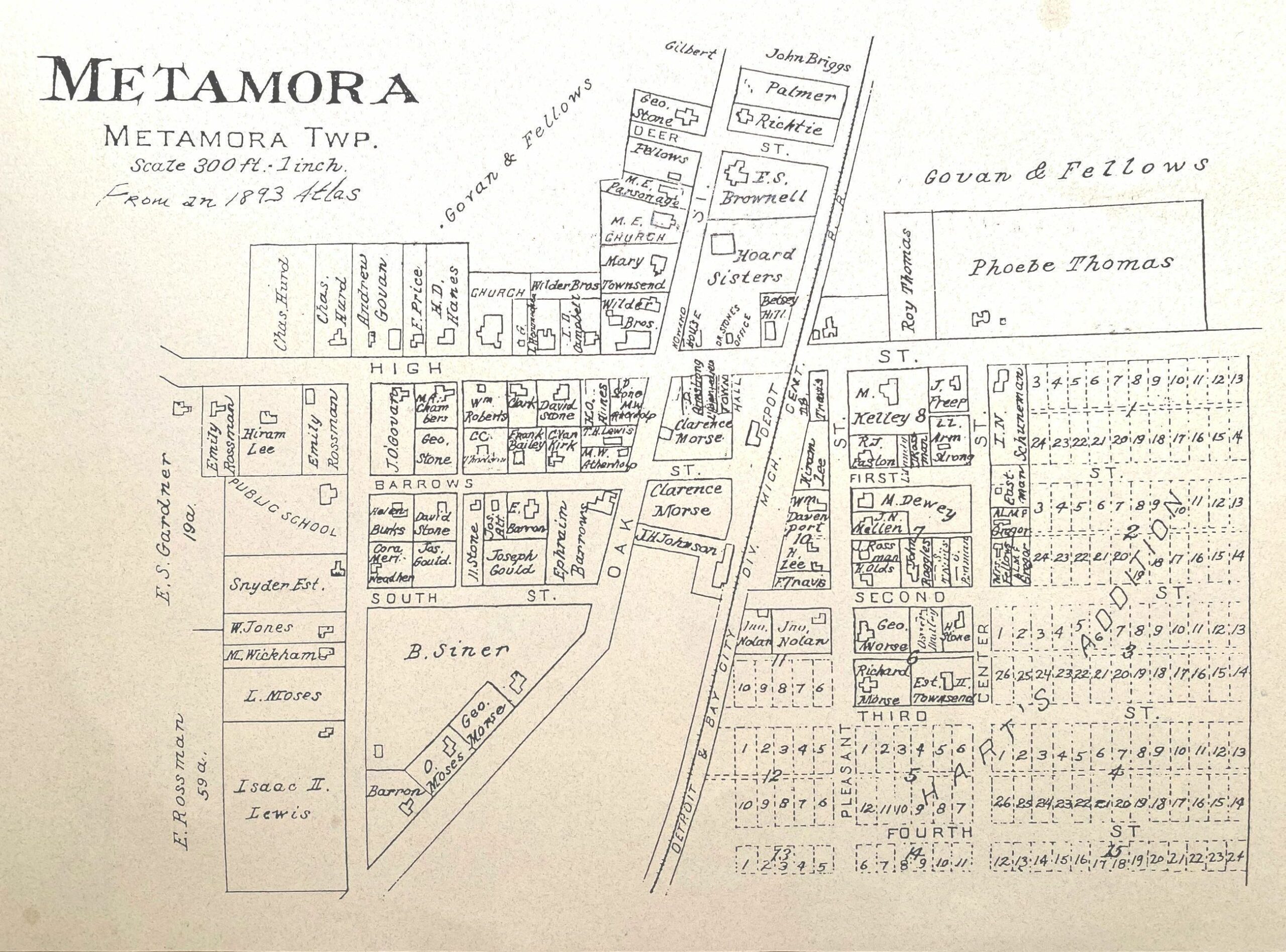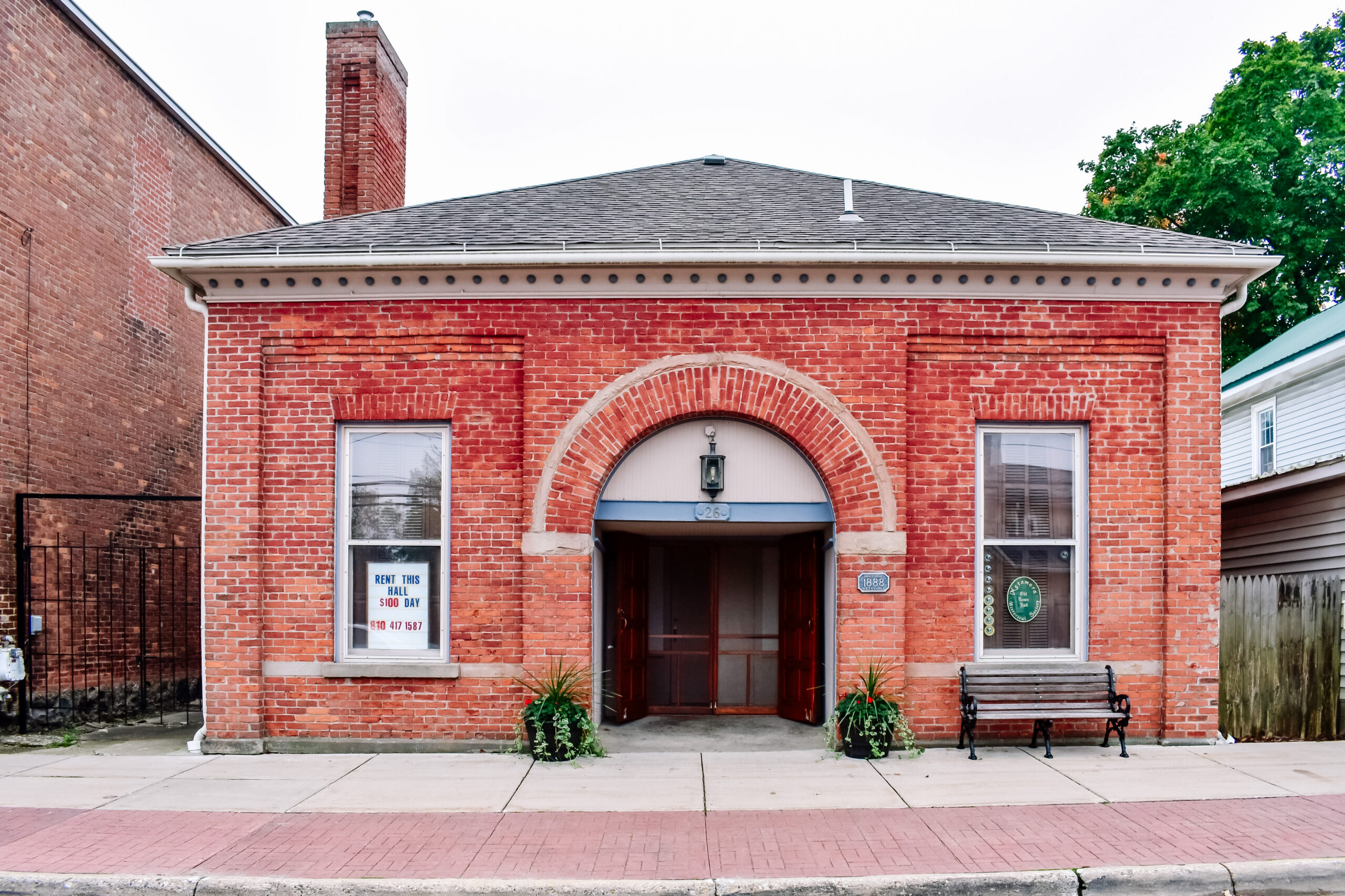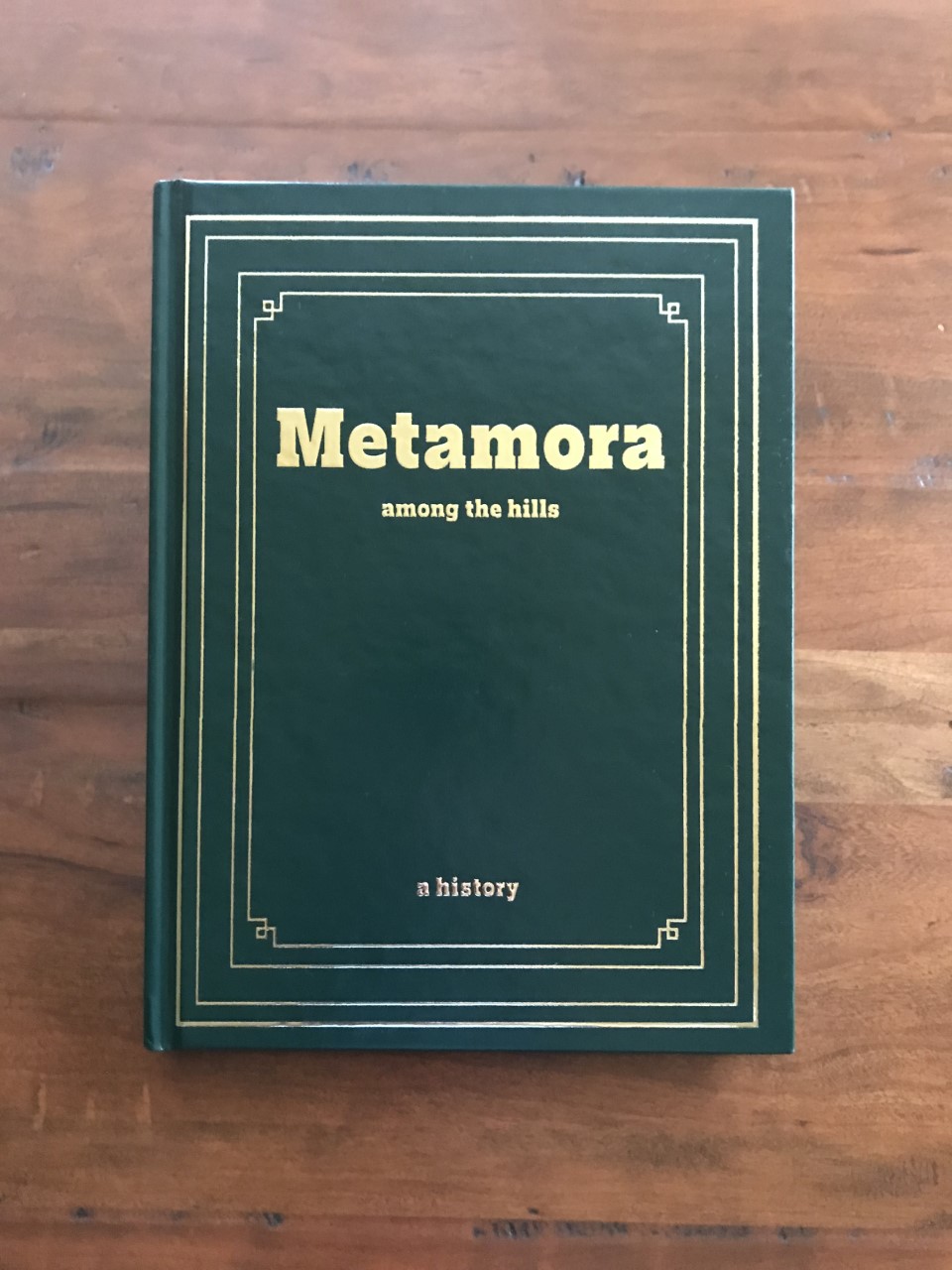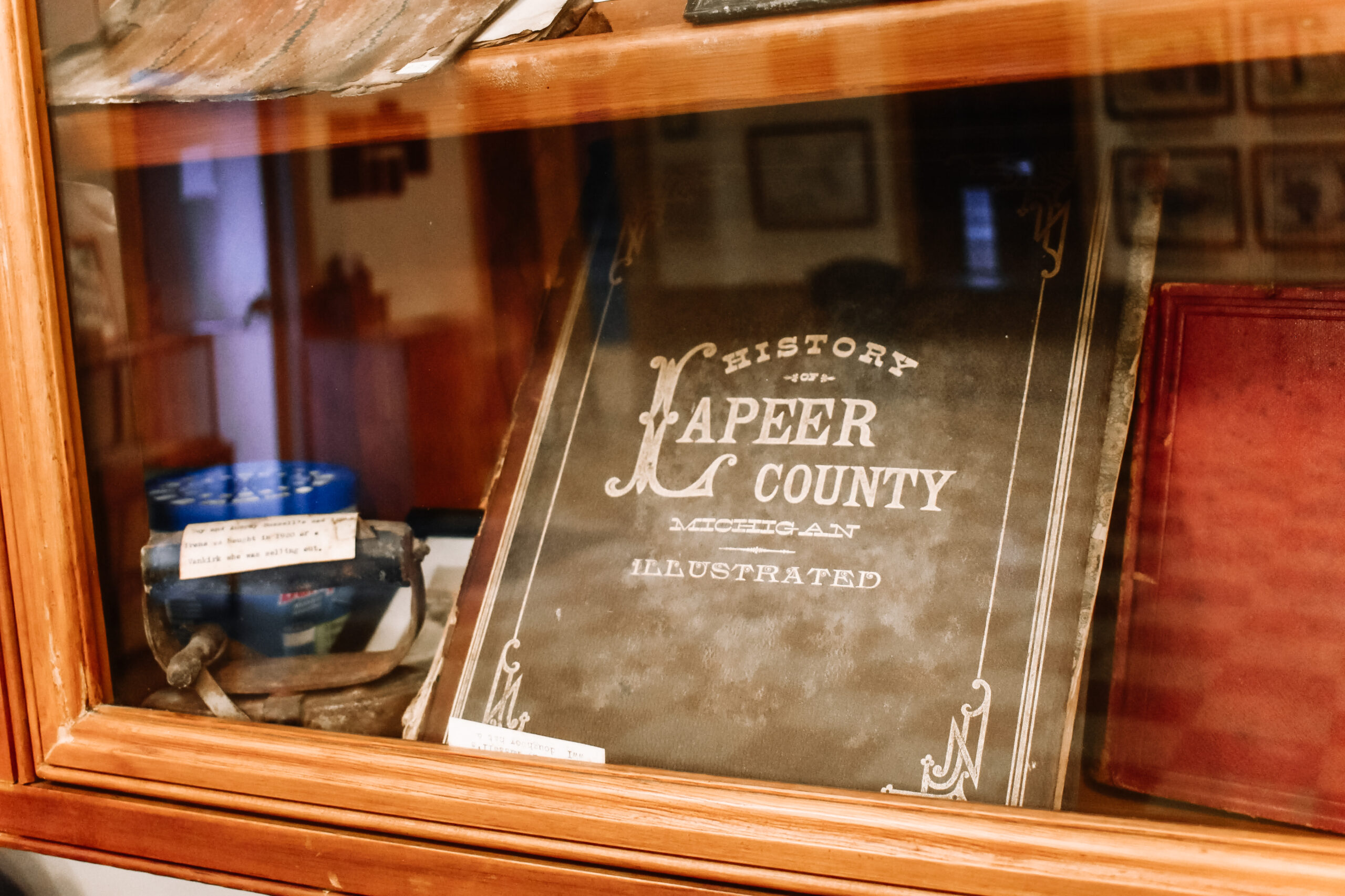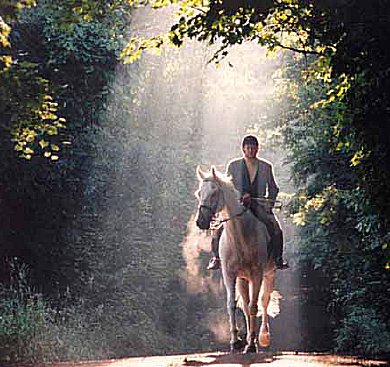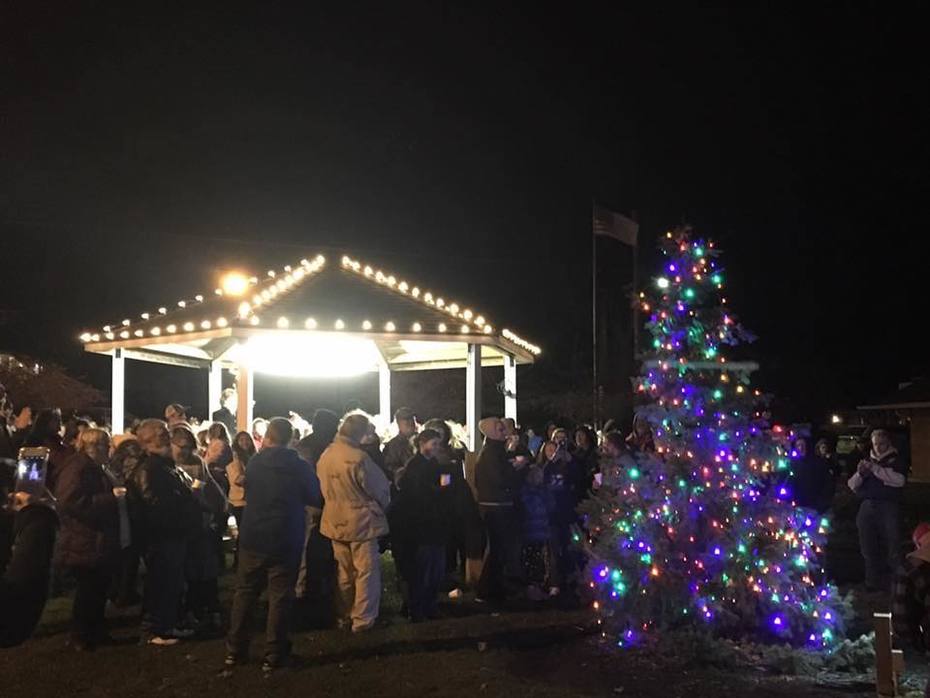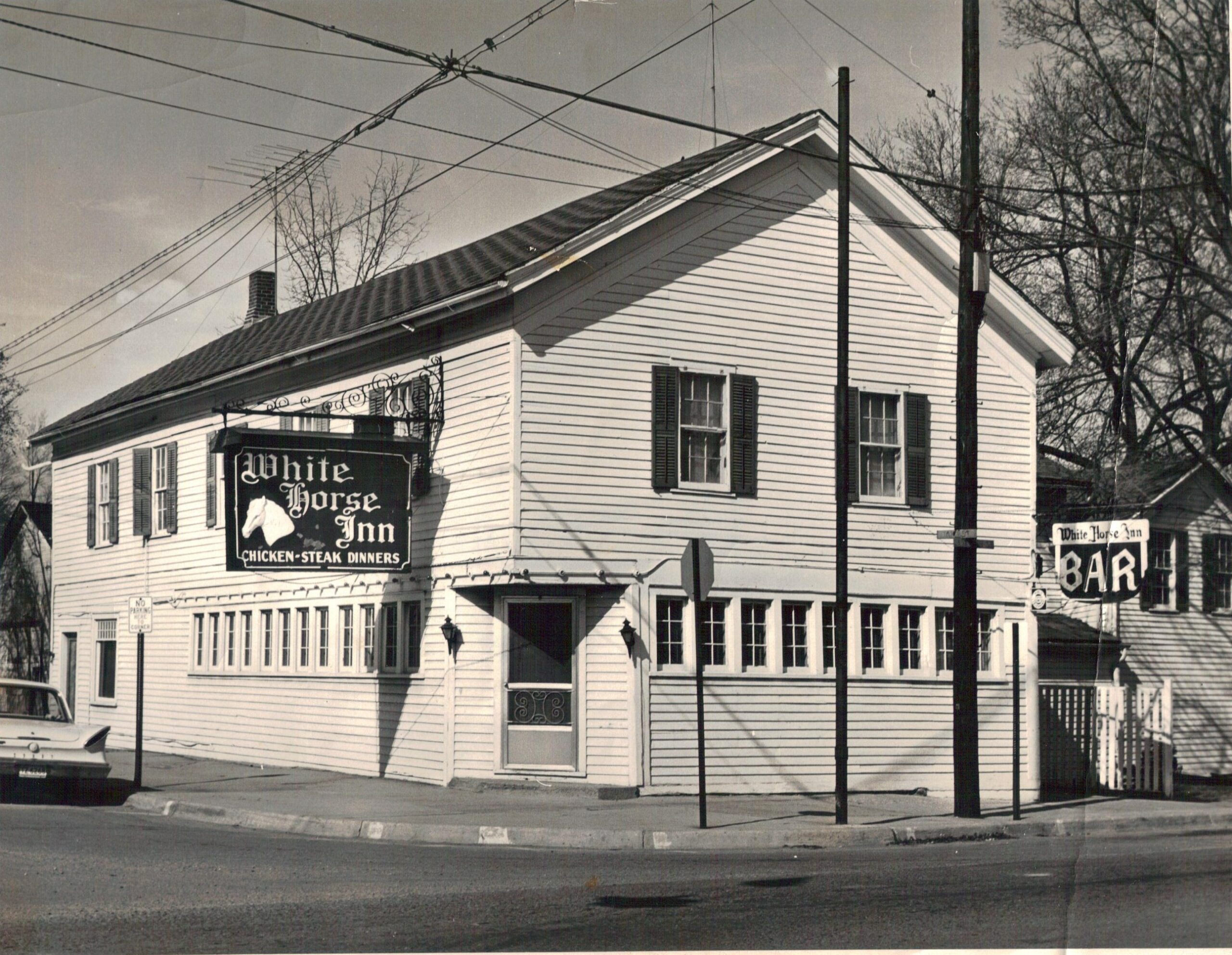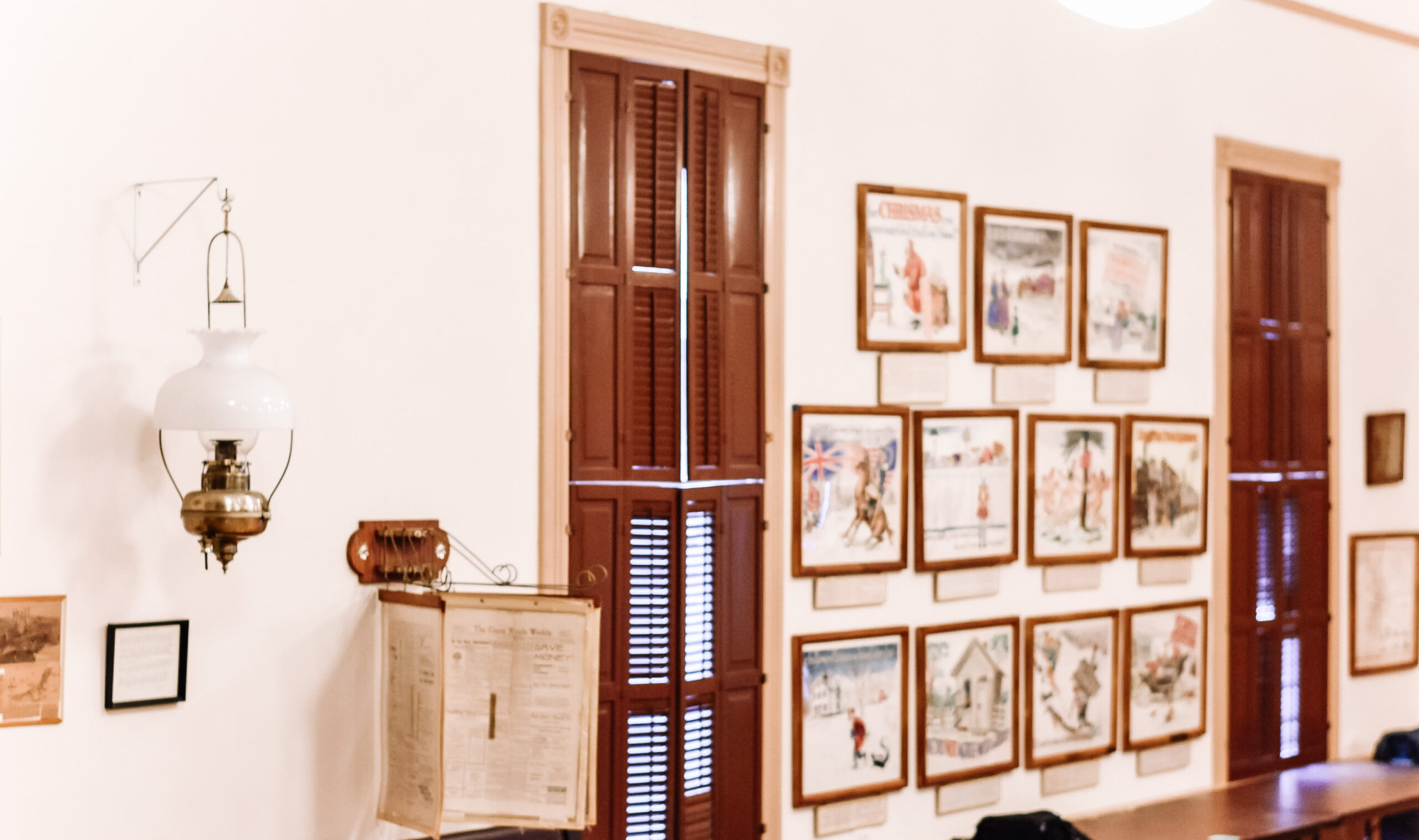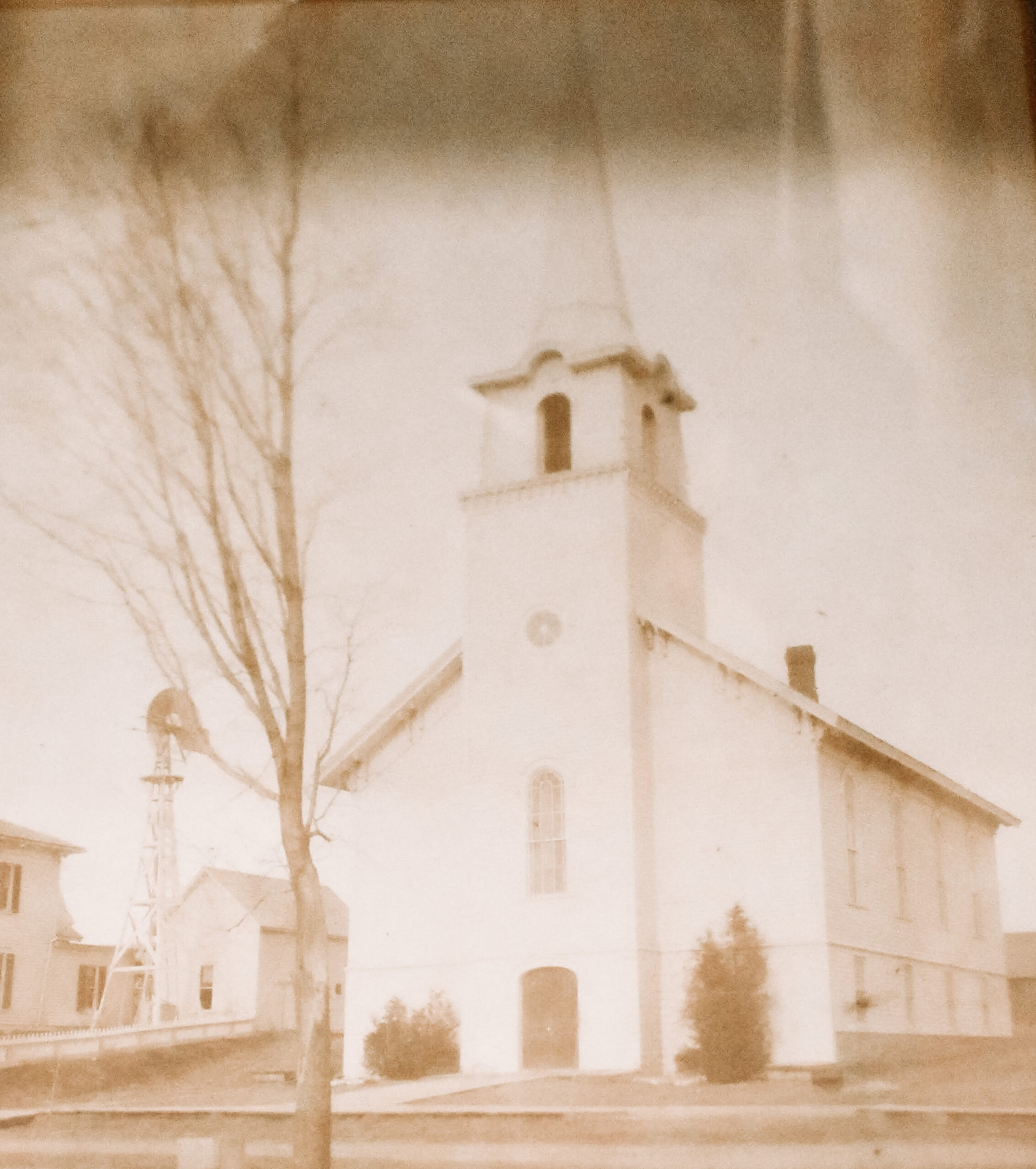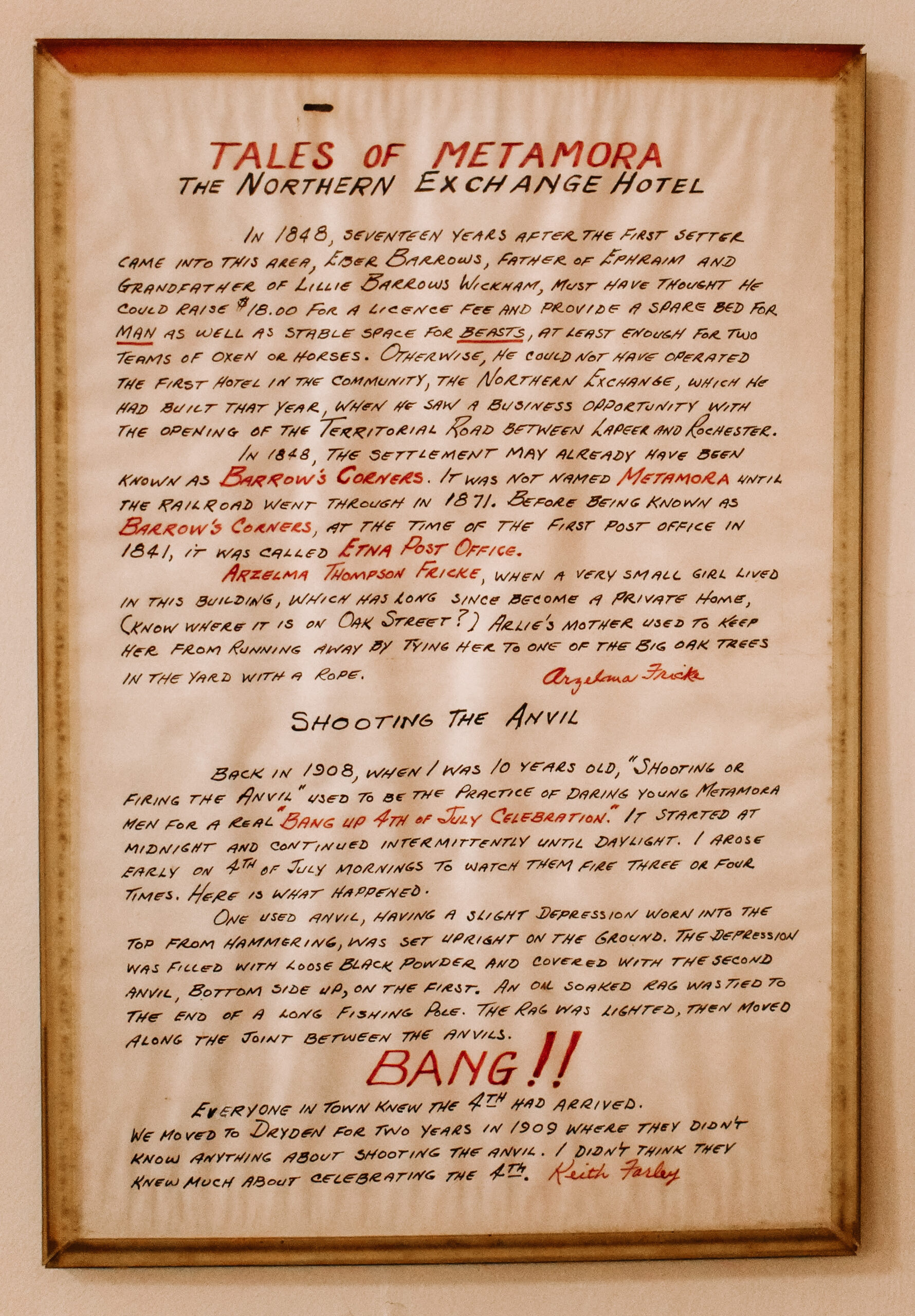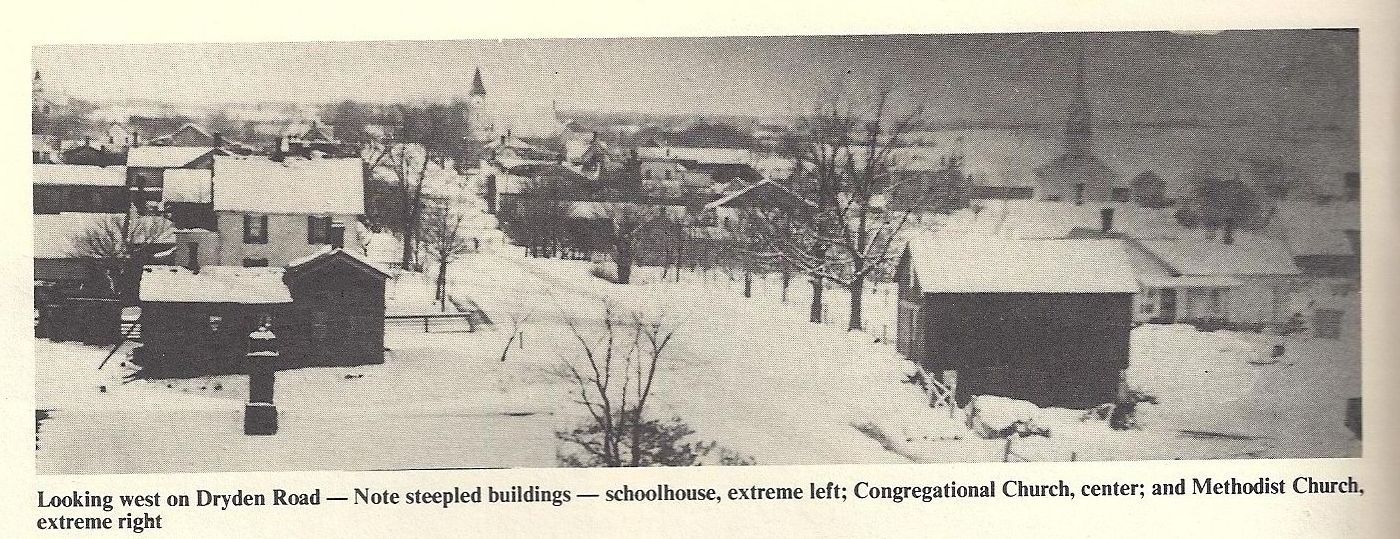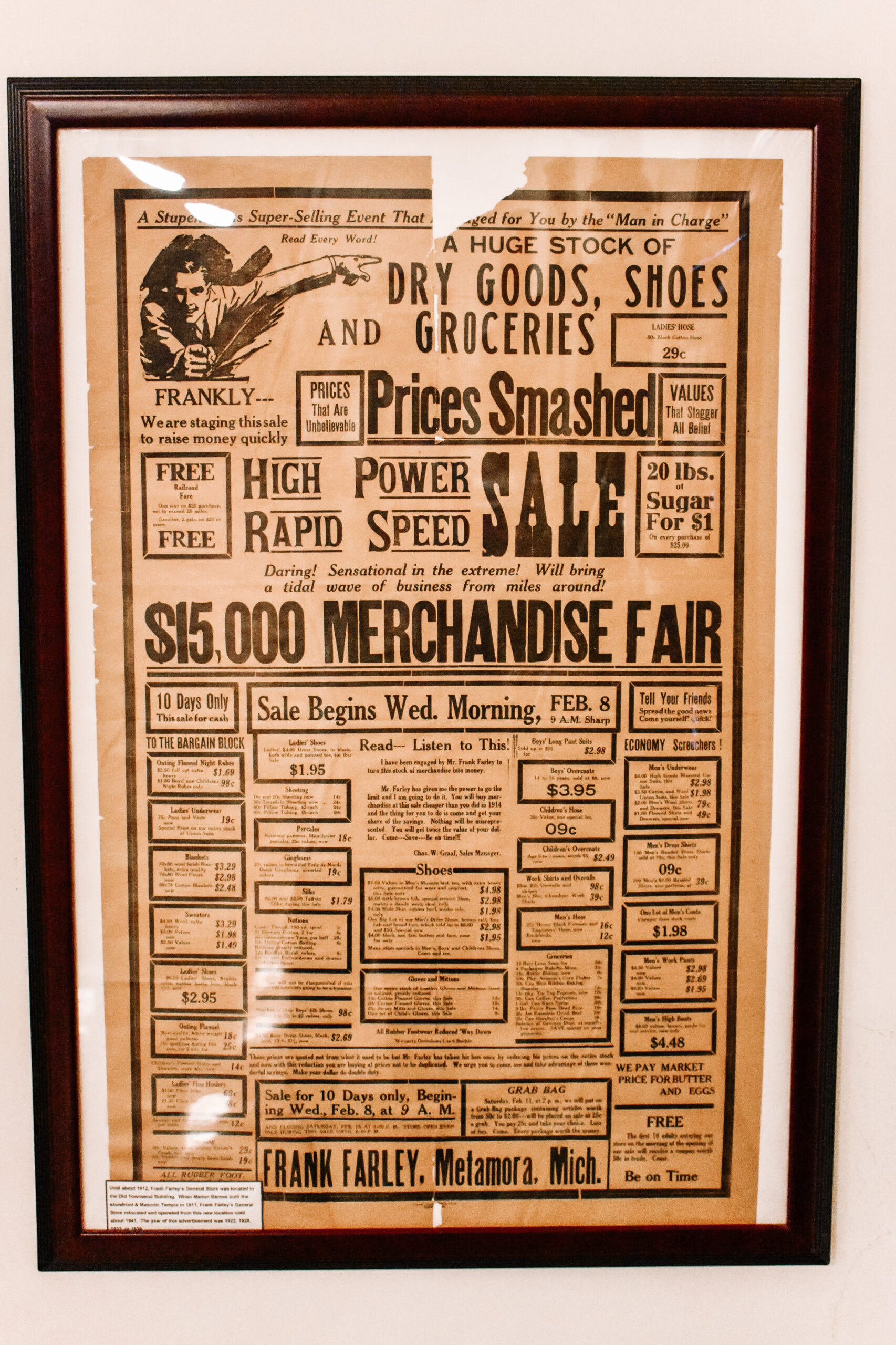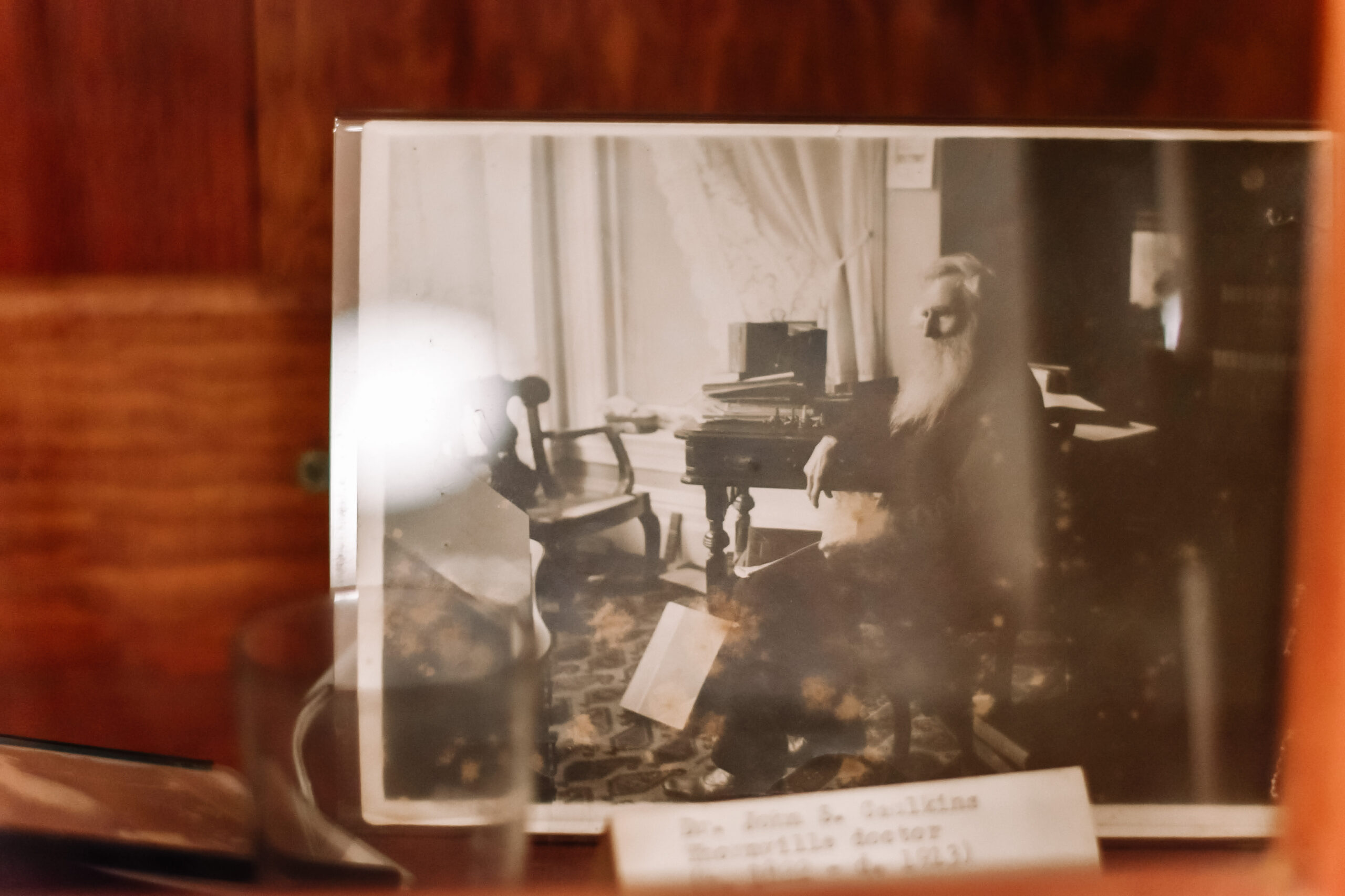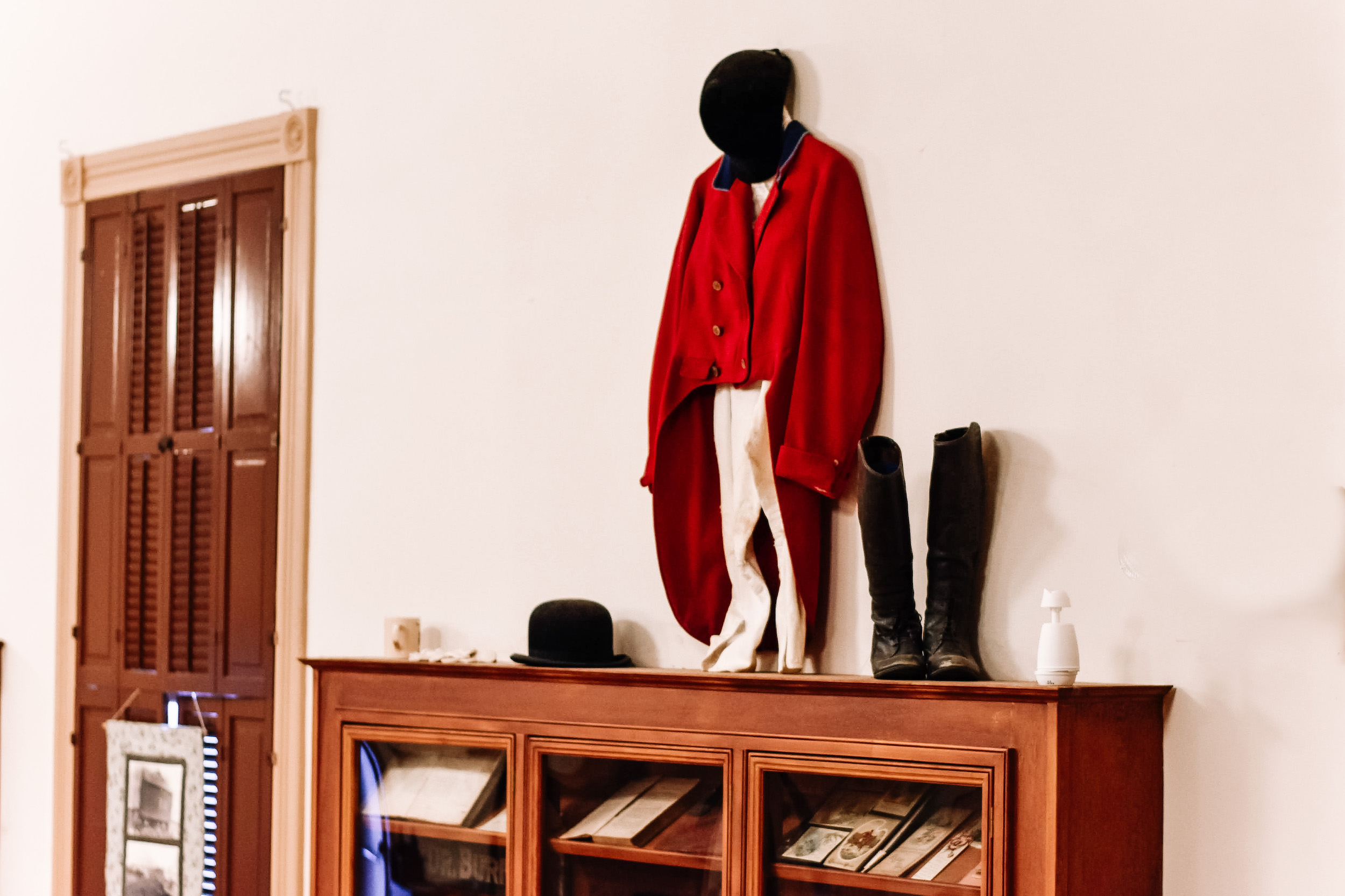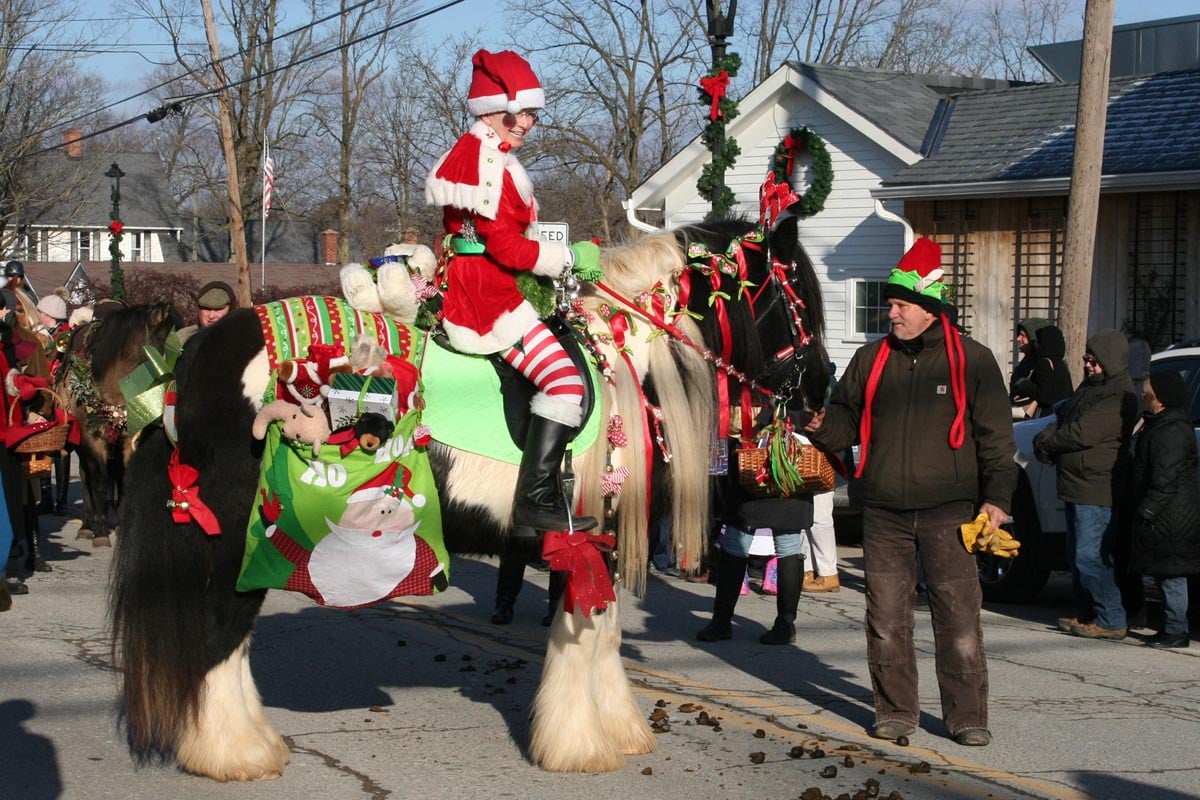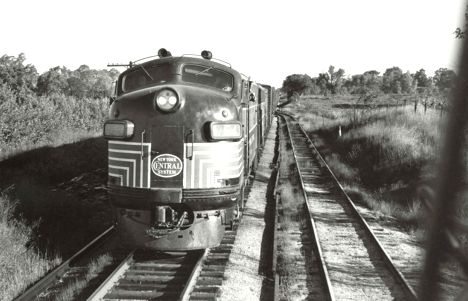gallery
historical metamora
METAMORA CROSSROADS HISTORIC DISTRICT
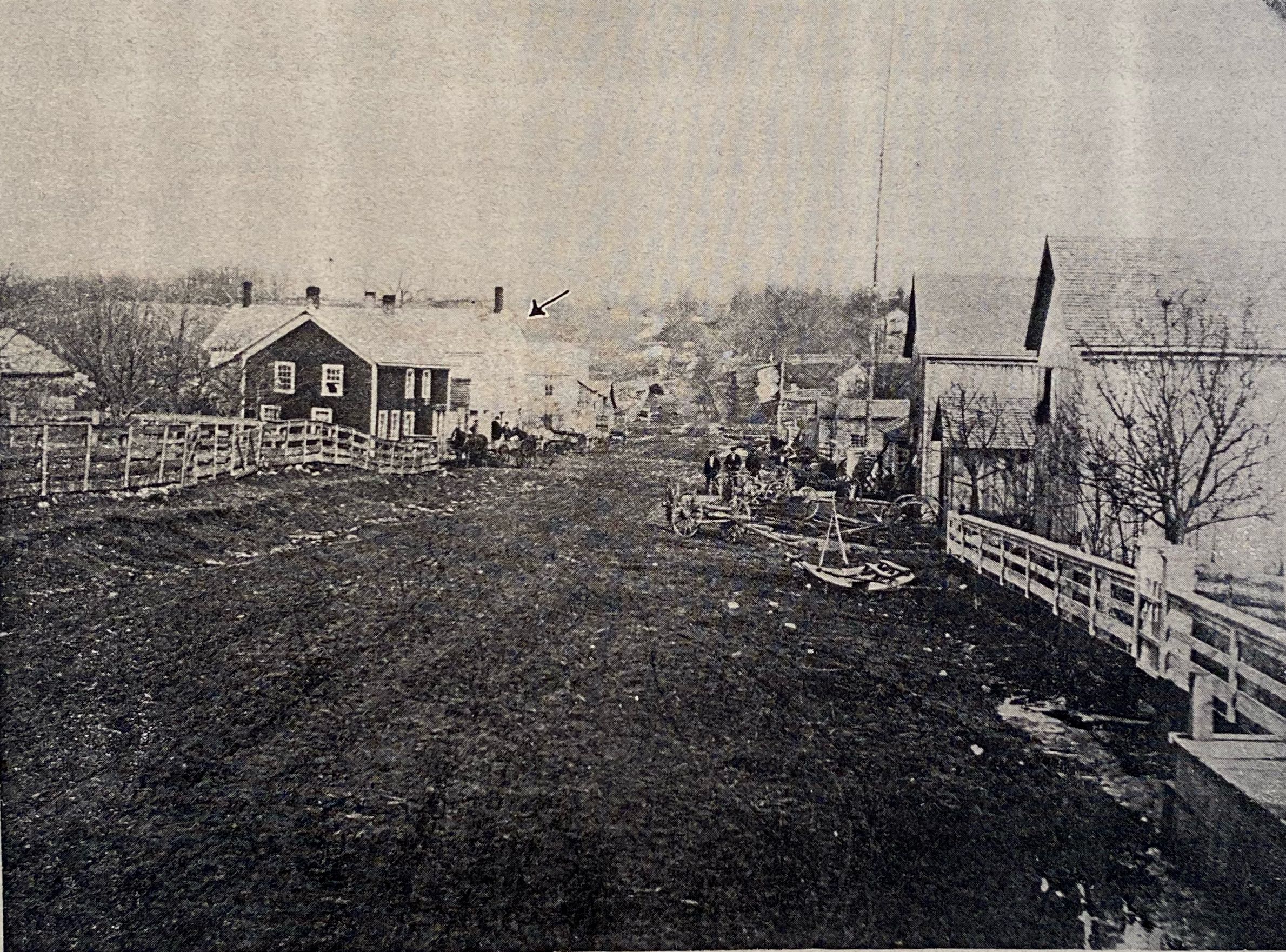
Metamora’s oldest known photo – c.1873
Looking east on High St. The arrow points to the Hoard House, which is now the White Horse Inn.
The Metamora Crossroads Historic District is a two block cluster of one and two story residential and commercial frame and brick buildings at the intersection of Metamora (Oak St.) and Dryden (High St.) roads. The District is only one and one half acres in size and contains ten buildings dating from 1850 to 1907.
The Late 19th century architectural integrity of the district remains strong with the Victorian Gothic influence on the Pilgrim Presbyterian Church at the district’s west end to the formal and horizontal emphasis of the Greek revivial era on the White Horse Inn at the east end of the district.
Sandwiched between are examples of Italianate architecture including:
- Rounded and basket arch enframements
- Decorative brickwork
- Paired brackets
Traces of Queen Anne and Romanesque are also to be seen whether in the rounded arch entrance to the Old Town Hall or the small-paned glass windows at the photography studio.
There is nothing radical about the historic development of Metamora. No major human or natural phenomenon; no inventions or natural resources occured here. Instead, Metamora’s distinction is that it demonstrates a typical evolution of a 19th century Michigan farm community. This evolution consisted of three distinct phases. The first stage was the pioneer settlement of the township primarily occuring from 1836 to 1850. “Barrow’s Corners”, as Metamora was known, had been settled by Eber Barrows in 1838. In 1843, he built a log shanty which provided shelter and entertainment for the many travelers heading north to new settlement opportunities.
With the opening of the Territorial Road (Metamora Road) as a major north-south route from Pontiac to Lapeer in 1848 and with the establishment of a stage coach route soon after, many more permanent began replaceing the log cabin waystations. Barrow’s shanty became the Northern Exchange Hotel.
The second period of growth consisted of agricultural related services being concentrated at the crossroads. Wagon and blacksmith shops, a general store, two doctor’s offices found it convenient to locate here. By 1872, the village center was strong enough to compete and win a Detroit and Bay City Railroad Depot, a prize that insured its future growth.
Metamora received its more dignified name during the third phase which lasted from 1872 to 1907. The village population grew and more buildings were constructed. Stone’s Brick Block (1879), Pilgrim Congregational Church (1878), the Townsend Store (1888) and the Town Hall & Opera House (1888) were just a few built during this time.
Growth began to slow after this time and with the advent of the automobile, Metamora, as did countless other rural areas within a twenty mile radius of an urban area, went into a decline.
Today, the Metamora Historical Society is working hard to preserve the past. Many of the buildings within the district have been or are in the process of being restored.

1. Hoard House (White Horse Inn)
2. Town Hall & Opera House (Old Town Hall)
3. Barnes Store (Metamora-Hadley Masonic Lodge)
4. Barrows Store (RJ Holden & Associates)
5. Northern Exchange Hotel (Private Residence)
6. Deeter-Miller House (Private Residence)
7. Henderson Store (Sadie Hayes Styles; Kohl, Harris, Nolan & McCarthy)
9. Wilder Bros Store (The Village Saltbox)
10. Pilgrim Congregational Church (Pilgrim Presbyterian Church)
